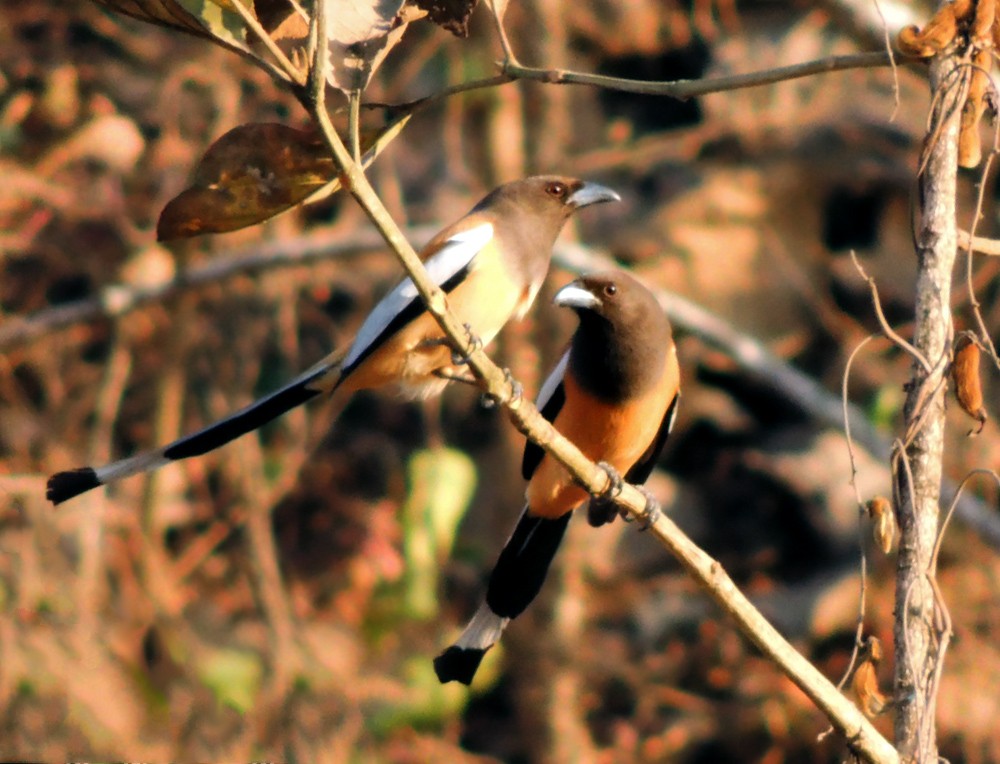Rufous Treepie
A species of Typical Treepies Scientific name : Dendrocitta vagabunda Genus : Typical Treepies
Rufous Treepie, A species of Typical Treepies
Botanical name: Dendrocitta vagabunda
Genus: Typical Treepies
Content
Description People often ask General Info
 Photo By Shantanu Kuveskar , used under CC-BY-SA-3.0 /Cropped and compressed from original
Photo By Shantanu Kuveskar , used under CC-BY-SA-3.0 /Cropped and compressed from original Description
The sexes are alike and the main colour of the body is cinnamon with a black head and the long graduated tail is bluish grey and is tipped in black. The wing has a white patch. The only confusable species is the grey treepie which however lacks the bright rufous mantle. The bill is stout with a hooked tip. The underparts and lower back are a warm tawny-brown to orange-brown in colour with white wing coverts and black primaries. The bill, legs and feet are black. 
Size
50 cm
Nest Placement
Tree
Feeding Habits
Rufous Treepie consume a variety of foods including insects, small mammals, and even small birds. Known for their adaptable foraging, they exhibit opportunistic feeding behaviors and specific dietary preferences unique to their species.
Habitat
Rufous Treepie habitats comprise a range of environments such as open deciduous woodlands, from dry to moist broadleaf forests, areas of secondary growth, and cultivated regions dotted with scattered trees. These birds also adapt well to human-modified landscapes, including urban parks and large gardens. They predominantly reside in lowland regions and gently undulating hills, extending their range to elevations as high as 2100 meters.
Dite type
Omnivorous
People often ask
General Info
Feeding Habits
Bird food type
Behavior
It is an agile forager, clinging and clambering through the branches and sometimes joining mixed hunting parties along with species such as drongos and babblers. They are known to be a cleaning symbiont of deer, feeding on ectoparasites of sambar which permit them to perch and position themselves to invite the birds to examine specific parts. The nest is built in trees and bushes and is usually a shallow platform. There are usually 3-5 eggs laid. 
Distribution Area
The range of this species is quite large, covering all of mainland India up to the Himalayas, Pakistan and southeasterly in a broad band into Bangladesh, Burma (Myanmar), Laos, and Thailand in open forest consisting of scrub, plantations and gardens. In the Himalayas, they make seasonal altitudinal movements. 
Species Status
Not globally threatened.
Scientific Classification
Phylum
Chordates Class
Birds Order
Perching birds Family
Crows and jays Genus
Typical Treepies Species
Rufous Treepie